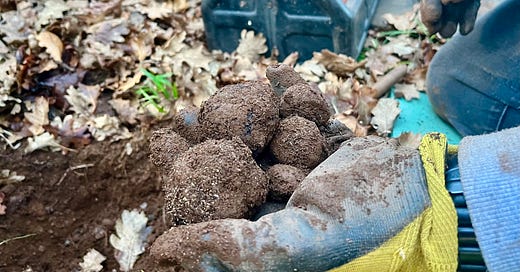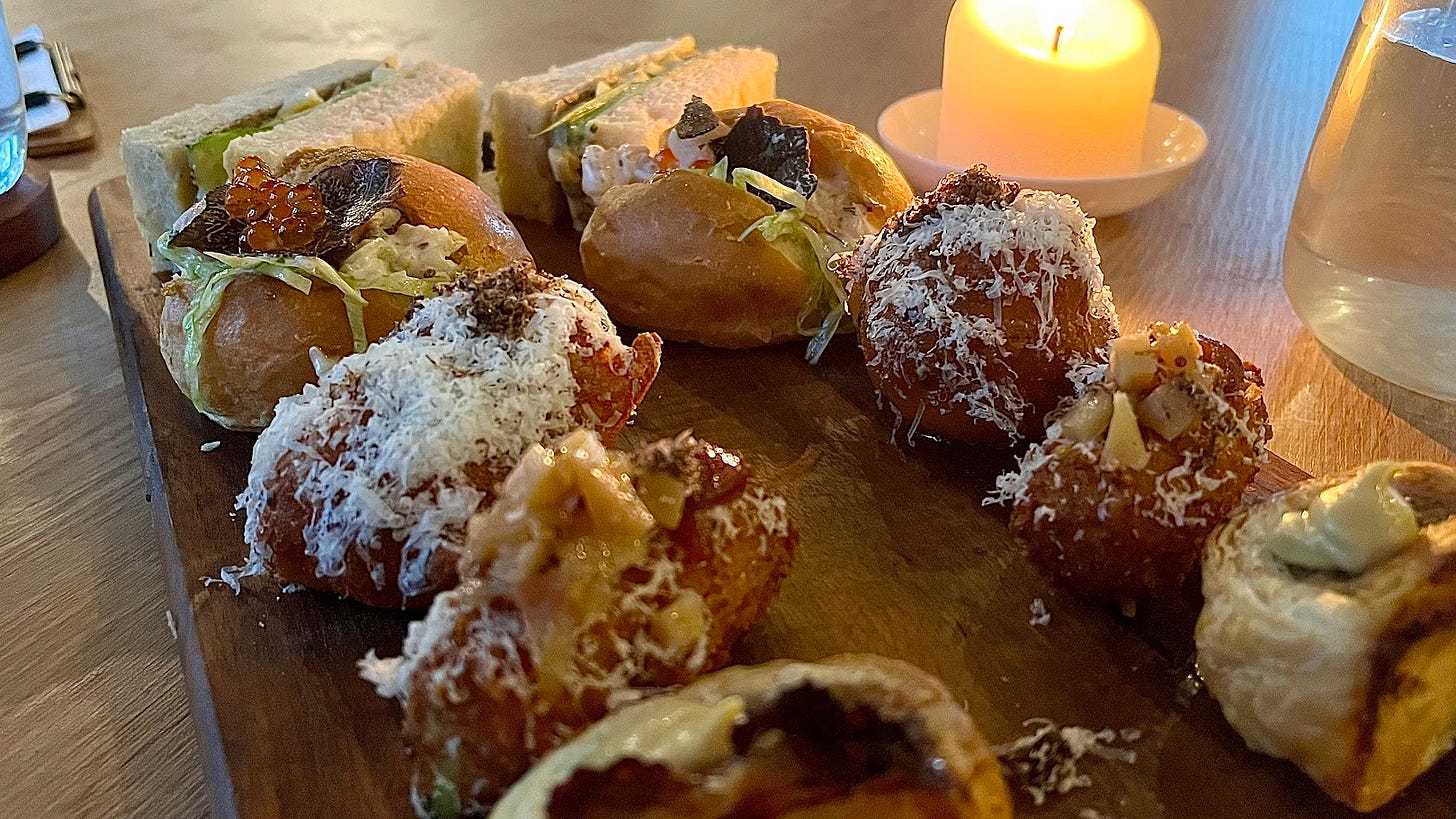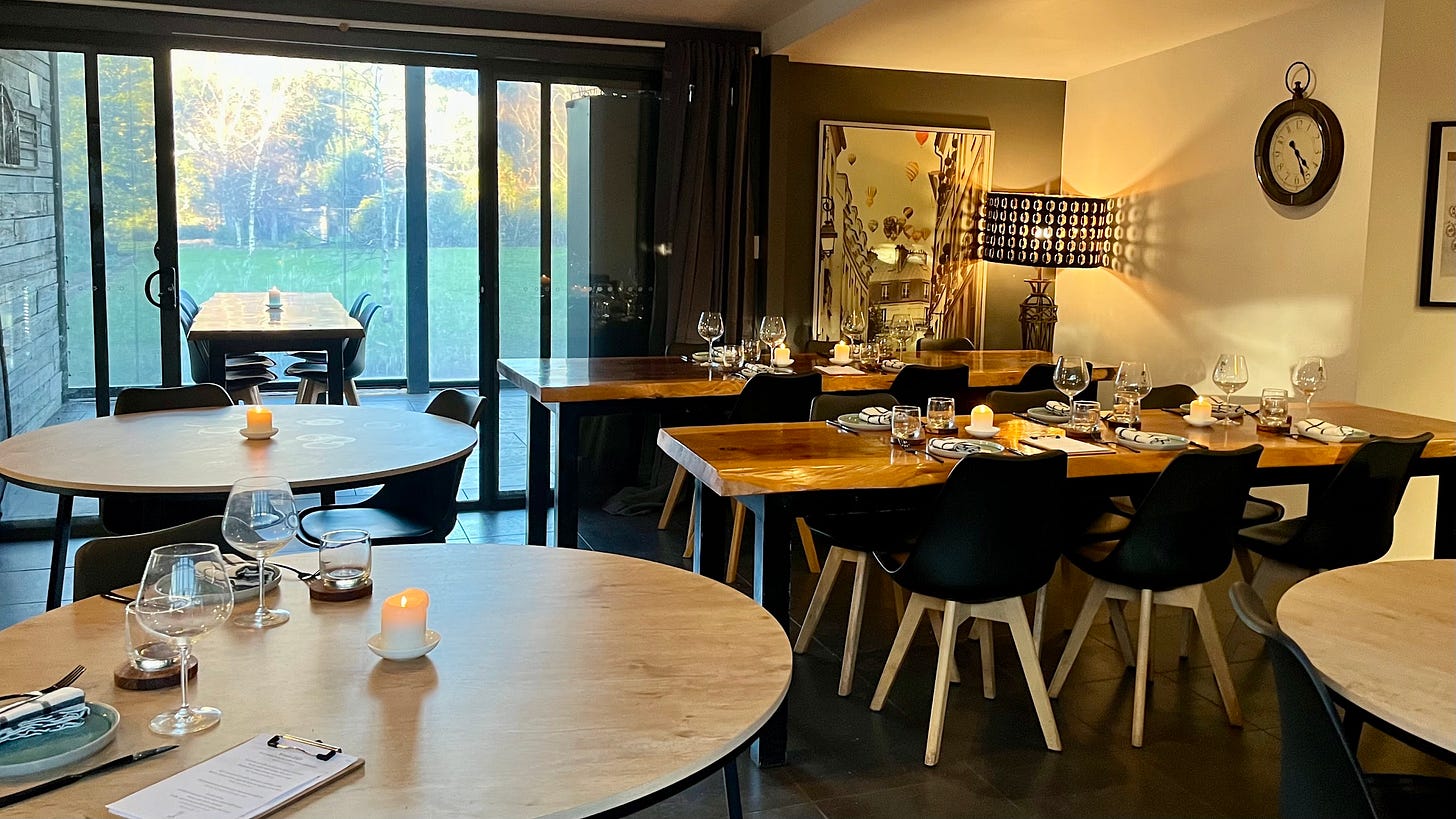Last weekend, a trip out to the central highlands of regional Victoria gave me the opportunity to visit Black Cat Truffles, a truffle orchard and restaurant run by experienced restaurateur Liam Downes. The estate features a beautiful French-style truffière, where trees are planted in (extremely satisfying) alignment, and grows black Périgord truffles.
Previously managing five restaurants in and around Ballarat in north-eastern Victoria, Liam, along with his wife and two kids, decided to embrace a quieter life last year when they moved into the farm’s cottage permanently. Taking over from a 17-year venture and bringing a fresh perspective to the business, Liam has quickly grown the location’s reputation and is already planning to transform the on-site restaurant.
La science
Truffles are an ectomycorrhizal fungus, thriving in a symbiotic relationship with tree roots, most commonly oak or hazel. Essentially, the tree roots provide sugars to the truffle, while the truffle enhances the tree’s nutrient absorption. In Australia, truffles are primarily cultivated in cooler regions such as Tasmania, Western Australia, and central Victoria. The harvest season generally spans from late May to early September, although the inoculation process likely begins in December, using truffles unsuitable for selling or consumption from the previous season.
L’amour
When it comes to truffle hunting, pigs were the original connoisseurs. Yet, as Liam entertainingly explained, truffles emit a scent containing a compound similar to androsterone, a sex pheromone found in boar saliva. This makes the sows slightly amorous, and hard to control. Nowadays, farmers prefer dogs, who are equally adept at finding truffles, but are easier to physically handle, less likely to devour the truffles the instant they find them, and keep their emotions to themselves!
Interestingly, while there are certain dog breeds that are considered preferable to become trained truffle hunters, Liam simply trained his own family dogs, and they were up to the task!
Sur la carte
I took advantage of this opportunity to ask Liam about the logistics of truffles. Unlike many farmers who allocate their produce to restaurants in known quantities, Liam takes orders before unearthing any of his. Orders come in on Sunday evening, and by Monday morning, Liam and his dogs are out in the field to ensure Wednesday morning delivery country wide. Even more impressive, local restaurants that place an order in the morning on weekdays often receive their freshly unearthed truffles by 5pm the very same day.
This expedited process ensures his beautiful Périgord truffles maintain their intensely earthy flavour. They are nutty and woody with hints of walnuts. Essentially, the aroma is reminiscent of a slightly damp patch of dirt — very expensive dirt ($3000/kg).
After the exciting outdoor truffle hunt, we were treated to an afternoon degustation menu. The snack-based spread featured an array of delectable bites: truffle and fennel sausage rolls with truffle mustard; gruyere, ham and truffle croquettes; chicken, leek, and truffle pithivier; and a savoury goats cheese doughnut with truffle honey. For dessert, the platter included scones with truffle pear jam and clotted cream; truffle macarons; and a truffle-infused chocolate truffle.
While I’ve often enjoyed truffle shaved over a range of dishes, be it rich pomme purée, creamy pasta, or steak, these bite-sized delights showcased the remarkable versatility of truffles in both savoury and sweet combinations. The flavours were intense, and I was unable to finish everything, but to my pleasant surprise I wasn’t sick of that distinctive truffle taste.
If you're curious to learn more about Black Cat Truffles and see the estate in all its glory, check out Episode 15 of Masterchef Australia Season 16, which was filmed on location: Click here!
Over the last few years, I’ve come to view truffles much like caviar — a rare and premium product often used to prove a point or perhaps justify high menu prices. I’ve almost never made it through a Michelin-starred meal without truffle or caviar being served. While I admit that my initial gastronomic experiences were enriched by these ingredients to some extent, likely in their novelty and luxurious image, their ubiquity in fine dining has started to feel excessive. That is not to say I dislike these ingredients. In fact, I quite enjoy the salty bursts of caviar, but can’t help but wonder if those little gel balls found in bubble tea, with a touch of added colour and decreased size, would also do the trick at a fraction of the expense.
Now, Liam is planning to transform his modest restaurant, which from the outside appears to be a simple storage shed, into an award-worthy culinary destination. He envisions a stunning central wood-fire kitchen surrounded by a 360-degree bar, giving every guest the "chef’s table" experience.
This visit has profoundly changed my appreciation for both the product and the nature of truffle farming. Liam heads out daily with his family dog to unearth truffles, one by one, without the aid of any machinery. His approach is rooted in dedication and genuine passion — qualities I deeply admire and respect in any artisan. Vive la truffe !








Thanks for sharing your reflections on the farming and enjoyment of this exotic fungii Sean!